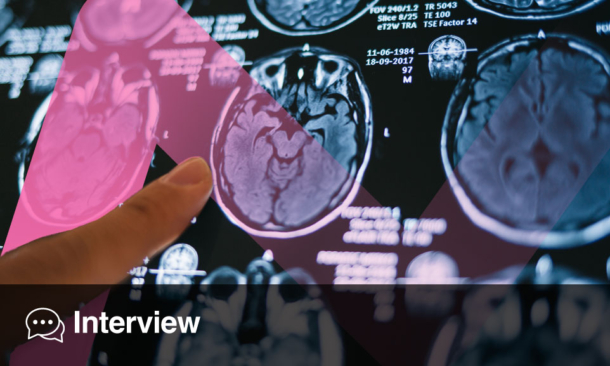Abstract
This case study discusses the incidence of a paraneoplastic autonomic neuropathy in an elderly male who had an otherwise negative work-up for their aetiology of orthostatic hypotension. This case illustrates the importance of trying to correctly identify the aetiology of orthostatic hypotension, which is often overlooked, and frequently diagnosed as idiopathic. Orthostatic hypotension is most prevalent in elderly populations and can be debilitating, leading to a higher incidence of falls and trauma. Thus, it is important to obtain further work-up when traditional treatments are ineffective. In patients with new and insidious onset of orthostatic hypotension, previous history of malignancy, and possible symptoms consistent with ongoing malignancy, it is imperative to consider paraneoplastic autonomic neuropathy as a potential cause of orthostatic hypotension.
Key Points
1. In addition to the common causes of orthostatic hypotension, paraneoplastic autonomic neuropathy should still be considered in the differential diagnosis when assessing patients who present with acute, yet persistent, orthostatic hypotension.
2. It is imperative to obtain a comprehensive paraneoplastic antibody titre panel in patients with a history of malignancy who show no improvement with the typical orthostatic hypotension treatment, such as midodrine and fludrocortisone.
3. There is limited research on paraneoplastic syndromes, despite their strong association to malignancies. Further studies can provide insight into symptomatic treatment and slowing down disease progression to improve quality of life.
INTRODUCTION
Paraneoplastic autonomic neuropathy is a syndrome with an unclear aetiology and wide array of symptoms. Some studies have identified a strong autoimmune component in the development of paraneoplastic autonomic neuropathy, though some aetiologies are non-immune in nature.1-3 The symptoms present in a progressive autonomic fashion and include orthostatic hypotension, dry mouth, new onset urinary retention, and constipation.2 The diagnosis is difficult to arrive at, as it is a diagnosis of exclusion when other causes of autonomic dysfunction have not been confirmed.4,5 A proper diagnosis is imperative in populations with new onset of these symptoms, and can help direct symptomatic treatment for patients suffering from these symptoms. In addition, it can help identify potential malignancy in patients who otherwise have not been diagnosed. In this case of paraneoplastic autonomic neuropathy, the patient had new onset urinary retention and orthostatic hypotension. This article reviews clinical presentation, diagnostic steps, and management of paraneoplastic autonomic neuropathy to raise awareness of an uncommon condition.
CASE DESCRIPTION
The case presented in this article is of a 78-year-old White male, with a past medical history of hypertension, hyperlipidaemia, coronary heart disease, advanced emphysema, gastro-oesophageal reflux disease (GORD), previous myocardial infarction, previous pneumothorax, and bladder cancer with multiple trans-urethral resection of bladder tumour procedures, who presented to the hospital with a chief complaint of dizziness. The patient also presented with complaints of significant weight loss and poor appetite for the past 2 weeks. The patient denied any recent falls or loss of consciousness. They reported that their dizziness had been going on for a couple of months and that their primary care physician recommended discontinuing their unknown dose of metroprolol tartrate to prevent any episodes of falls. In addition, there was no pertinent family history, but the patient reported a 20-year smoking history that was discontinued after their bladder cancer diagnosis.
Upon admission to the emergency department, the patient’s vitals revealed a temperature of 97.6 °F, a blood pressure of 155/75, a heart rate of 133 beats per minute, a respiratory rate of 22 breaths per minute, and an oxygen saturation of 97% on room air. Physical examination revealed an elderly patient with cachetic symptoms who appeared to be in slight respiratory distress. The patient had a normal physical examination except for decreased breath sounds bilaterally in both lung bases. In addition, the patient was noticeably coughing and producing a greenish-white sputum. Upon admission, the patient’s initial basic metabolic panel was within normal limits. However, the complete blood count panel upon admission revealed leukocytosis of 10,800, anaemia with a haemoglobin/haematocrit ratio of 9.3/29.6, and thrombocytosis with a platelet count of 417,000. The patient’s initial basic metabolic panel was within normal limits. Urinalysis was drawn and was positive for 10–25 wbc/hpf, nitrites, and leukocyte esterase, which was consistent with a urinary tract infection (UTI). The patient was admitted due to fulfilling sepsis criteria due to UTI and community-acquired pneumonia (CAP).
Imaging was also done for further diagnostic work-up. Their chest X-ray showed bilateral opacification in their lungs with no evidence of pneumothorax. CT scans showed acute left upper lobe and right lower lobe pneumonia superimposed on severe emphysema and chronic interstitial lung disease, fluid in the right upper lobe bullae, right hilar adenopathy, chronic prostatitis, calcifications layering the urinary bladder, bilateral renal cysts, and cholelithiasis. In addition, the patient’s urine culture came back positive for coagulase negative Staphylococcus aureus.
The patient’s CAP and UTI were treated with azithromycin and cefuroxime. Although the patient was being treated acutely for the CAP and UTI, their recent weight loss needed to be addressed. They had reported a significant loss of appetite, early satiety, dyspepsia, dysphagia, and unintentional weight loss of 30 lb. Metastases to the patient’s gastrointestinal tract were suspected due to a previous history of bladder cancer and smoking history, and thus an upper gastrointestinal series was obtained, which showed mild to moderate sliding hiatal hernia. The patient reported that they did not want to pursue any surgical intervention for their sliding hiatal hernia. The patient’s GORD was medically treated with a gastrointestinal cocktail consisting of sucralfate, a proton pump inhibitor, and lidocaine.
However, while the patient’s CAP, UTI, and GORD were treated, their dizziness persisted. During the beginning of their hospital course, orthostatic measurements were taken. During the first few days at the hospital, the patient reported dizziness after a few minutes of standing during orthostatic measurements and walking to the restroom. This eventually progressed to dizziness even when sitting upright. The orthostatic measurements were initially seen as benign and secondary to the patient’s presenting symptoms, health conditions, and deconditioning. However, as the patient’s other acute conditions were being treated, their routine blood pressure readings continued to drop. During the physical exam, the patient appeared more ill than on admission, and reported a new and increased frequency of dry mouth, which was believed to be due to discontinuation of intravenous normal saline fluids, and several instances of night sweats. In addition, there were many overnight event chart notes that reported standing hypotension severe enough to require stat intravenous normal saline boluses.
The patient would report feelings of persistent fatigue while standing, which eventually became fatigue with sitting and lying down towards the end of their treatment. Towards the latter half of their hospital stay, physical therapy examined the patient’s mobility. The patient walked from their bed to the hospital room door, only to report severe dizziness and a feeling of presyncope. An Aspergillosis test, a Fungitell® (Associates of Cape Cod, Intl, Inc., Liverpool, UK) test, a QuantiFERON (Qiagen, Venlo, the Netherlands) test, and a thyroid panel were all obtained and were all negative. The patient’s cancer antigen was elevated, and they were started on 5 mg of midodrine three times a day while continuing their other treatments. As a work-up for orthostatic hypotension, two A.M. cortisol levels and a 24-hour urine cortisol were found to be elevated, and Endocrinology was consulted as a result. Initially, the elevated cortisol levels were attributed to hospital stressors as the patient did not fit the clinical picture for Cushing’s syndrome, including symptoms of weight gain and hypertension. However, two dexamethasone tests were still conducted, which did not fully suppress the patient’s cortisol. After 9 days of escalating doses of midodrine, there was no clinical improvement of the patient’s orthostatic hypotension, and they were switched to 0.1 mg of fludrocortisone. ACE™ wrap (3M, Maplewood, Minnesota, USA) placement was attempted, but they were removed at the request of the patient. The serum adrenocorticotropic hormone levels that were collected reflected low levels of the hormone, though this was collected while the patient was on fludrocortisone. A repeated chest CT showed no significant changes apart from some increased fluid in their right upper lobe bullae. Paraneoplastic antibody panels, including Hu antibodies, were thus sent in to evaluate the possibility of undetected malignancies, such as small cell lung cancer, causing the orthostatic hypotension. The patient requested and was discharged on home hospice services following a discussion with palliative care.
Several weeks after discharge, the patient’s paraneoplastic antibody panel came back positive. The report showed a P/Q type calcium channel antibody, consistent with an autoimmune neurological diagnosis of paraneoplastic autonomic neuropathy. No further work-up was done as per the patient’s wishes.
DISCUSSION
Orthostatic hypotension is defined as a drop in at least 20 mmHg systolic blood pressure or at least 10 mmHg diastolic blood pressure within 3–5 minutes of standing up.6,7 This type of hypotension is most commonly seen in the elderly who are 65 years of age and older.8,9 In fact, up to 10–30% of the elderly population present with orthostatic symptoms, with idiopathic orthostatic hypotension being the most common aetiology.8 Symptoms such as lightheadedness and fatigue are commonly seen when the patient is sitting upright or standing during blood pressure readings.2 The causes can vary case by case and are split into two categories: non-neurogenic, such as medication-induced and volume depletion, and neurogenic, such as autonomic nervous system failures or baroreflex dysfunction.10,11 One study found that 35% of patients with orthostatic hypotension had autonomic failure due to diabetic neuropathy or paraneoplastic syndromes, 38% had no evidence of general autonomic dysfunction, and 27% had underlying neurodegenerative disorders.12 Another study found that most medication-induced orthostatic hypotension is caused by hypertensive medications, such as vasodilators.9 This explains why the patient’s primary care physician had initially discontinued their metoprolol tartrate.9 Treatment for orthostatic hypotension can include the following: removal of the inciting medication, providing intravenous fluids for hypovolaemia; compression stockings to reduce venous pooling; or pharmacological treatment, which includes midodrine or fludrocortisone.9 In this case study, the patient was not responsive to non-pharmacological and pharmacological forms of treatment. In addition, the patient’s orthostatic work-up was negative for endocrinological causes, such as Cushing’s syndrome. Only after extensive lab work up, including an abnormal paraneoplastic antibody panel, was a potential cause of the patient’s orthostatic hypotension determined.
As previously mentioned, the patient’s orthostatic hypotension persisted with medical management, which included midodrine, fludrocortisone, fluid boluses, and ACE™ wraps. Aside from repeat CT scans and endocrinological work-up, Hu and paraneoplastic antibody panels were sent in. The patient’s Hu antibody panel came back normal, whereas the paraneoplastic antibody panel came back abnormal: 0.05 nmol/L of the P/Q type voltage gated calcium channel antibody was detected. While a low titre of the antibody was found, it is likely that the patient’s persistent orthostatic hypotension was secondary to autonomic paraneoplastic syndrome.
To begin with, paraneoplastic syndromes are immune-mediated syndromes that impact central, peripheral, or autonomic nervous systems.13 Some paraneoplastic syndromes include paraneoplastic cerebellar degeneration, Lambert–Eaton myasthenic syndrome, limbic encephalitis, and paraneoplastic opsoclonus-myoclonus.14 Symptoms typically include difficulty ambulating, loss of muscle tone and co-ordination, difficulty swallowing, dry eyes and mouth, sweating, urinary incontinence, and abnormal gastrointestinal motility.14 Paraneoplastic syndromes are usually categorised as endocrinological or autonomic/neurological in origin and are associated with malignancies, most commonly small cell lung cancer, and less commonly breast cancer and haematological cancers.4,13,15 These syndromes encompass disorders that occur due to tumour secretion of peptides (endocrine), or by autoimmune cross reactivity between normal and malignant tissues (autonomic/neurological).4 The autoantibodies that are seen in autonomic/neurological paraneoplastic syndromes target intracellular neuronal proteins, including Hu protein, or against neuronal cell surface or synaptic proteins, including P/Q- and N-type calcium channels.5,16
The P/Q type calcium channel binding antibody is one of many autoantibodies tested in the paraneoplastic antibody panel. The P/Q type calcium channel is a voltage-gated calcium channel that mediates the amount of calcium influx for neurotransmitter release.17,18 They are predominantly found in the synaptic terminals of neurons in the cerebellum, cortex, and hippocampus.17-19 Antibodies against these channels are most commonly found in Lambert–Eaton myasthenic syndrome, and antibodies against the P/Q and N-type channels are associated with small and non-small cell lung cancer.20
The positive predictive value of the paraneoplastic antibody panel test for an autoimmune neurological paraneoplastic syndrome is 19%, and a cancer diagnosis is 21%, with 18% of the 21% being a historical cancer diagnosis.21 In one study, it was determined that this antibody “has a diverse neurological presentation in cancer types, including squamous cell carcinomas, adenocarcinomas, and small cell carcinomas.”21 In addition, another study showed that low titres of the P/Q type calcium channel antibody were specifically found in a little more than half of patients with paraneoplastic encephalomyeloneuropathy complications of the lung, ovary, or breast carcinomas.3 Many of the cases that presented with a P/Q type calcium channel binding antibody frequently also presented with Lambert–Eaton syndrome, with occurrence in only 1% of patients with small cell lung cancer.1 Though the P/Q type calcium channel binding antibody is most commonly seen in Lambert–Eaton syndrome, the patient’s laboratory and clinical symptoms were interpreted as paraneoplastic autonomic neuropathy secondary to an unidentified developing lung cancer due to an extensive smoking history.21,22
Early detection of paraneoplastic syndromes can aid in the diagnosis of a developing cancer.23 It is imperative to measure serum and cerebrospinal fluid Hu and paraneoplastic antibody levels during the work-up of a patient whose history is positive for malignancies, and shows no improvement in orthostatic hypotension with typical treatment of midodrine or fludrocortisone.23 While a niche subject, current research shows that there are few peptide molecules available, such as ω-agatoxins IVA and IVB, that selectively target and block P/Q type calcium channels.18 If the patient’s paraneoplastic antibody levels were discovered earlier, then administration of these medications could have been provided for symptomatic relief. In addition to the limited research on the P/Q type calcium channel autoantibodies and their implications on paraneoplastic syndromes, another limitation to the study included the patient’s desire to go home on hospice care after a long hospital course.18 Given the acute nature of the orthostatic hypotension in relation to the patient’s admitting conditions, as well as the patient’s desire to go home, further work-up, such as brain MRI, electromyography, and PET scans, was not done. If the autoantibody tests were performed earlier during the patient’s hospital stay, this may have changed the course of laboratory and imaging work-up to fit a more paraneoplastic syndrome and cancer picture. However, despite all of this, a strength of this case was that the patient was readily willing to repeat clinical measurements, as well as undergoing numerous medication changes and diagnostic testing in hopes of treating their symptoms. This case overall provides perspective on the array of symptoms often overlooked in autonomic dysfunction that could have an insidious aetiology.
It is important to consider patient history as well as a holistic viewpoint when reflecting on a patient’s symptoms. In this report, the authors treated the patient symptomatically, and were able to deduce the underlying aetiology only after extensive inpatient hospitalisation and work-up. The authors add the perspective that it is important to cast a wide differential diagnosis, and with strong clinical suspicion, to consider malignancy as a potential cause of novel autonomic dysfunction in the elderly population.
PATIENT PERSPECTIVE
While the patient was unable to share their written perspective of their diagnosis and hospital treatments, they repeatedly shared their thoughts with the medical team throughout the duration of their hospital stay. The patient always explained that they were willing to undergo testing in order to find out a cause and solution to their orthostatic hypotension. However, the patient inevitably decided to go home on hospice, as they believed that there was no proper treatment that the hospital could provide for their condition.






